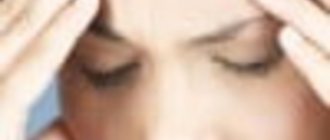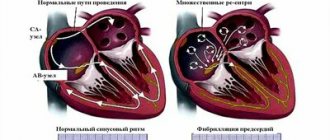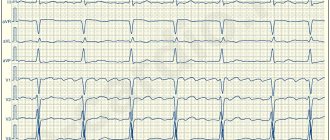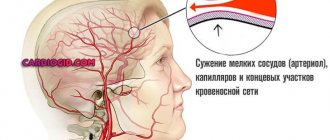One of the common problems faced by modern people living in large cities and metropolises is throbbing pain in the temples. This symptom is an integral part and sign of many diseases and often turns out to be an alarming call to the presence of a serious pathology in the body of a person suffering from a headache.
Painful sensations arising in the temporal region are probably familiar to each of us; at least once in their life, every person has experienced a throbbing headache in the temples. Pain can occur on both sides or separately in the right or left temple. According to the sensation, the majority of the examined patients note that pain localized in the temporal areas and having a pulsating nature has a much greater intensity in comparison with diffuse or classic headaches.
Causes of throbbing pain in the temples
Throbbing pain in the temples can have many different causes, and therefore the approach to treatment will differ significantly. It is necessary to start with the fact that pain in the temples cannot be an independent disease and fighting only this symptom will be a pointless exercise. Throbbing pain in the temples can have a very diverse nature, but we can identify the main reasons for its formation and these include:
- Diseases of the cardiovascular system. The most common causes include atherosclerotic changes in the walls of blood vessels, which in turn lead to vascular disorders of an ischemic and metabolic nature in the nervous tissue of the brain.
- Infectious and inflammatory diseases of brain tissue. The most common infectious and inflammatory diseases of the central nervous system include: meningitis, encephalitis, ventriculitis and ependymatitis.
- Inflammatory diseases of the peripheral nervous system. In particular, neuritis of the facial or trigeminal nerve.
- Infectious and inflammatory diseases of the temporal arteries.
- Toxic damage to tissues of the central nervous system.
- Stressful situations and severe overexertion.
All of the above reasons may have a component in the clinical picture such as headache in the temporal region.
Local inflammatory diseases
Throbbing pain in the left or right temple can occur as a result of a unilateral inflammatory lesion, for example, with neuritis or arteritis. The inflammatory process leads to a reflex spasm of blood vessels in the area of the inflammatory process. which significantly impairs the trophism of surrounding tissues and causes ischemia. Ischemic damage leads to the formation of a pain syndrome localized in the area of damaged tissue, and inflammatory edema aggravates the situation. The cause of throbbing pain in the left temple is most often inflammation of the sensitive branches of the trigeminal nerve or inflammation of the facial nerve.
As for encephalitis and meningitis, these diseases lead to cerebral edema and a significant increase in intracranial pressure, which in turn forms a characteristic pain syndrome with localization of pain in the temporal regions.
Vegetovascular dystonia
The syndrome of vegetative-vascular dystonia, although not fully approved by many experts, still has a basis. Vegetovascular dystonia is a functional disorder. In which normal contraction of smooth muscle fibers cannot be carried out, a local increase in blood pressure may occur inside the vessels located in the brain tissue.
Pain in the temples of a vascular nature
In most cases, it is damage to the cerebral vessels that causes serious pain. Severe throbbing pain in the right temple may be associated with atherosclerotic lesions of the cerebral arteries belonging to the middle cerebral artery basin, less often the temporal artery itself. Since the brain has a complex nociceptive or pain system, when the baroreceptors located in the endothelium of the vessels are irritated, a severe pain syndrome is formed. Increased blood pressure in combination with atherosclerotic vascular lesions is the most common cause of throbbing pain in the temporal regions on both sides. Most patients note that when blood pressure rises, throbbing pain in the temples is often combined with pain in the back of the head. A one-sided headache with a predominant localization in any area of the head, in this case in the temporal region, is usually called migraine.
Osteochondrosis
One of the common causes of throbbing pain in the temples can be osteochondrosis of the cervical spine. Impaired mobility and configuration of the vertebrae leads to compression of the vertebral arteries and reduces blood flow through them. As a result of inadequate blood flow to parts of the brain, severe pain in the temples can occur. Almost always, such pain is accompanied by impaired coordination of movements and determination of the position of the body in space.
Oncological diseases
One of the symptoms of the development of malignant or benign neoplasms localized in the central nervous system may be the occurrence of pulsating or pounding headaches, especially when the tumor process is close to the cerebral arteries.
What is atrial scotoma?
By ocular migraine, experts mean a type of headache with a complex of neurological manifestations, including visual abnormalities. The pathology was first described in the 19th century, but the mechanism of its occurrence was presented in more detail by modern physiologists. It is believed that the tendency to ocular migraine is inherited genetically through the female line. Men suffer from it in isolated cases.
Atrial scotoma has no direct relation to ophthalmology; however, during an attack, serious disturbances in visual perception may occur. According to statistics, pathology is a companion to the physiological and physical maturation of the body, that is, at a young age. Due to the instability of the autonomic nervous system, attacks can recur several times a month. In older age, migraine bothers people who have to experience visual stress for a long time.
Linear progression is not typical for atrial scotoma. The attacks arise and subside spontaneously. Complications do not occur even after prolonged exacerbations, although at the peak of pain, complete loss of vision is possible. After relief of the main neurological symptoms, the ability to see is restored independently.
How is throbbing pain formed?
Pain in the temporal areas has a pulsating nature due to several reasons. The vascular component plays a major role in shaping the nature of pain. Ripple occurs as a result of:
- Rapid reflex angospasm. The narrowing of the diameter of the cerebral arteries, in particular the temporal one, leads to a sharp increase in vascular pressure.
- Atherosclerotic changes in blood vessels lead to thickening of their walls and a significant loss of elasticity, which leads to the formation of a more rigid pulse wave.
Environmental factors can lead to spasm of cerebral vessels. and internal factors of the body. Stressful situations often act as a provocateur, which lead to the release of biologically active substances into the blood - catecholamines, which have a spasmodic effect and sharply increase blood pressure. Also, throbbing pain can appear as a result of a sharp temperature change, for example, if you go out into the cold without a hat in winter, a spasm of the cerebral arteries occurs, which causes throbbing pain in the temples.
It's worth contacting a specialist
Let's not lie, of course it's worth it. A throbbing headache in the temples can be a transient symptom of a functional nature, for example with vascular dystonia, but much more often such pain is associated with serious diseases, the early diagnosis of which can significantly affect the treatment process and its results. So if you experience pain in your temples with a pulsating nature, you should not hesitate to seek advice from your doctor. Only timely diagnosis will help answer the question of what is the cause of such pain and how serious the pathology is.
If you notice one or more of the following symptoms in yourself or your loved ones, be sure to contact a specialist for qualified medical help.
- Painful sensations have a pronounced intensity;
- Pain in the temples does not go away for a long time, i.e. lasts more than 4-5 hours;
- The pulsation tends to increase and has a paroxysmal course;
- Throbbing pain is accompanied by severe nausea and vomiting without relief;
- The appearance of pain or its intensification during physical activity;
- Simultaneous increase in body temperature or local increase in temperature of the skin of the neck and face;
- Fixing consistently high blood pressure numbers - more than 140 and 90 mm. Hg Art.
Symptoms of ocular migraine
Based on its clinical manifestations, atrial scotoma is difficult to confuse with other ophthalmological diseases. In the retinal form, provoked by abnormal relaxation of the posterior cerebral artery, the patient is concerned about:
- defects appearing in the field of view - bright flashes, flickering, dark spots and streaks that can merge with each other;
- gradual total decrease in visual acuity;
- the appearance of phosphenes (visual images) in the “blind” zones of the visual field and along its periphery.
As ocular migraine worsens, it becomes complicated by headache localized in the frontal lobe, bridge of the nose, spreading to the orbits. It pulsates, waxes and wanes, like contractions during childbirth, inevitably reaching a peak. At the peak of the attack, pain is complicated by nausea, vomiting, and a feeling of fullness in the head.
Good to know: a characteristic symptom of ocular migraine is increased sensitivity to light, sounds, and touches. They increase the pain, so the patient strives with all his might for solitude and silence.
The average duration of an attack of atrial scotoma is from 30 to 300 minutes. A mild degree of anomaly occurs within 10-20 minutes, sometimes not accompanied by headaches. After the end of the attack, it takes up to 1 hour for complete restoration of vision.
If atrial scotoma is caused by compression of the 3rd pair of cranial nerves, the patient experiences:
- transient drooping of the upper eyelid;
- dilation of the pupil in one eye while maintaining the same size in the other;
- dilation of the pupil against the background of paralysis of the muscles that regulate its diameter;
- divergent strabismus due to paralysis of the extraocular muscles in one eye.
Among the visual impairments with ocular migraine of this form, a split image is observed, when one eye perceives the picture correctly, and the other transmits an image inverted horizontally or vertically. This picture is typical for children and adolescents who have entered puberty.
Good to know: ocular migraine with compression of the cranial nerves has a specific “Alice syndrome”, which consists of the appearance of visual hallucinations visible in peripheral vision.
Symptoms with ophthalmoplegic atrial scotoma last longer than with retinal scotoma - up to 2 weeks. All this time, the anomalies may be accompanied by headaches, but often occur without them.
Diagnostics
The cause of pain in the temples can be determined in different ways. The first thing a specialist begins with is interviewing the patient and clarifying the location of pain, because one-sided pain can already lead to the correct diagnostic path. Neurologists have noted that in almost 70% of cases, inflammation of the peripheral nerves innervating the temporal and facial zones is localized on the left side. Accordingly, a common cause of throbbing pain in the left temple is neuritis of the facial or trigeminal nerve.
In a diagnostic examination, in addition to collecting an anamnesis of the patient’s life and illness, instrumental examination methods are of great importance. So absolutely every patient with such a symptom as throbbing pain in the temples should be examined by a cardiologist, with electrocardiography and ultrasound examination of the heart. To confirm the vascular origin of pain in the temporal regions, duplex scanning of the carotid arteries and, if necessary, angiography of the vertebral, cerebral and carotid arteries are required to determine the degree of compensation of cerebral blood flow. Instrumental diagnostic studies also include: radiography of the cervical spine, magnetic resonance and computed tomography of the brain and neck. As well as other narrowly focused studies.
In addition to the cardiologist, the patient is examined by such specialists as:
- Neurologist and neurosurgeon;
- Psychiatrist;
- Therapist;
- Ophthalmologist;
- Cardiovascular surgeon.
Laboratory diagnostic methods are of great importance in the examination, because in most cases the cause of such pain is cardiovascular pathology. To confirm or exclude diseases of a vascular nature. As well as inflammatory studies, the following studies are carried out:
- Determination of lipid spectrum;
- Conducting general and biochemical blood tests;
- Determination of coagulogram;
- Lipid profile analysis;
Conducting a complete diagnostic study is necessary for the correct formation of treatment tactics, since only pathogenetic treatment with the elimination of the main source of pain in the temporal areas can be effective.
Causes of ocular migraine
The main cause of atrial scotoma is a series of neurological disorders, the roots of which lie in a local decrease in the tone of the posterior cerebral artery. Against this background, ischemia (insufficient blood supply) develops in areas of the cerebral cortex involved in the analysis of visual signals, as well as in the retina itself. Alternatively, ocular migraine occurs due to compression of the 3rd pair of cranial nerves by the dilated cavernous sinuses or carotid arteries.
An attack of atrial scotoma can be triggered by:
- violation or prolonged non-compliance with the work and rest regime;
- sleep disorders;
- change of place of residence, especially with a change in time zones;
- suffered stress, emotional tension;
- hormonal imbalances, including cyclical changes in women;
- long-term stay in rooms with high gas pollution;
- exposure to flickering light sources, including older PC monitors.
The risk of experiencing an ocular migraine attack is higher in patients with abnormalities in the structure of blood vessels: aneurysms, malformations. In adolescents, an attack can be triggered by academic stress and a growth spurt.
Treatment
Treatment of throbbing pain in the temples can be either conservative or surgical, although the second method is used much less frequently. Than to drug treatment.
Drug therapy may be effective for inflammatory diseases. Antibacterial therapy using broad-spectrum antibiotics helps to effectively fight severe infectious diseases of the brain; antibacterial therapy is also highly effective in combating local inflammation of the peripheral nerves, for example, with trigeminal or facial neuritis. In combination with antibacterial therapy for inflammatory diseases, anti-inflammatory drugs of both steroidal and non-steroidal nature are used, depending on the severity of the inflammatory process. It is important to note that the use of anti-inflammatory drugs with an analgesic component alone cannot eliminate the cause of the disease. Yes, the headache may go away, but it will definitely come back again, since its cause has not been eliminated.
Since vascular lesions and hypertension are common causes of pain, treatment of these diseases and compensation for hypertension lead to regression of symptoms such as pain in the temples. Properly formulated antihypertensive therapy can completely relieve the patient from headaches in the temporal regions that have a vascular origin, while the patient will save himself from unnecessary use of anti-inflammatory and analgesic drugs. Take good care of your body and be healthy!
Diagnosis of ocular migraine
To diagnose atrial scotoma, ophthalmologists use classical research methods:
- collection of anamnesis, which establishes a hereditary predisposition to ocular migraine;
- examination of the anterior chambers of the eye and assessment of the condition of the pupils, the range of their movements, and reaction to light;
- ophthalmoscopy, revealing slight hyperemia of the conjunctiva, a difference in pupil diameter and lack of reaction to light on one or both sides, spasm of the retinal arteries with simultaneous dilation of the veins;
- perimetry, indicating a narrowing of the visual fields in the affected eye;
- angiography of the head or MRI of the brain, which detect vascular abnormalities that can provoke atrial fibrillation, areas of ischemia in the cerebral cortex, areas of cerebral edema, dilatation of the ventricles and subarachnoid space.
The form and type of ocular migraine can only be determined with repeated attacks. Comparison of at least 5 pathological manifestations helps differentiate atrial scotoma from superior orbital fissure syndrome.







